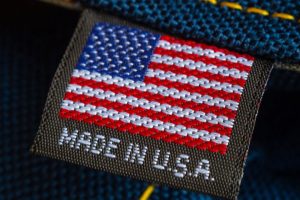 Here at Mike Eckman dot com, I like to ask the tough questions. Questions other camera review sites are unwilling or unable to answer.
Here at Mike Eckman dot com, I like to ask the tough questions. Questions other camera review sites are unwilling or unable to answer.
One day, while listening to some Kid Rock, drinking Budweiser, eating McDonalds, and shooting off fireworks, I thought to myself, “Gee, what was the best American 35mm rangefinder ever made?” Of course it had to be the Argus C3 I thought to myself, a camera so awesome that it was in production for nearly 30 years and doubles as a home defense weapon. But then I thought, “Naaah, there’s gotta be something better.”
So I put down my handle of Jack Daniels, fastened my overalls, and contacted all of my camera collector friends and begged and pleaded with them to send me examples of what they thought were the best of the best. At first, they just laughed and said to leave them alone. I persisted. Eventually, I won over Dan Hausman and Ray Morgenweck, who graciously submitted their candidates…
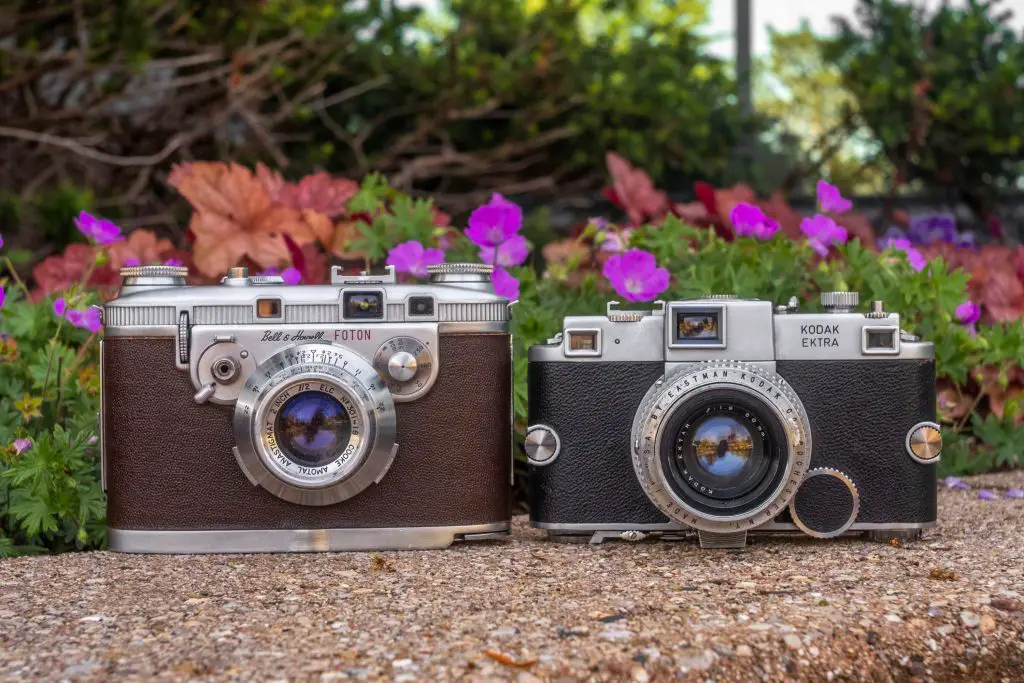 Behold the Kodak Ektra and Bell & Howell Foton, the undisputed kings of American ingenuity in the 35mm rangefinder segment. The Ektra was first released in 1941 and the Foton in 1948, so both cameras didn’t necessarily compete together in the marketplace upon their original releases, but with feature sets and prices well into the high end of the professional market, they were likely viable options in the years that followed.
Behold the Kodak Ektra and Bell & Howell Foton, the undisputed kings of American ingenuity in the 35mm rangefinder segment. The Ektra was first released in 1941 and the Foton in 1948, so both cameras didn’t necessarily compete together in the marketplace upon their original releases, but with feature sets and prices well into the high end of the professional market, they were likely viable options in the years that followed.
Both the Ektra and Foton were seemingly created with different priorities in mind, with Kodak likely eyeing military use for the Ektra with an ultra wide rangefinder and a wide selection of coated lenses upon the camera’s release, and the Foton with it’s signature clockwork motorized film transport would have been appealing for sports photographers who needed to shoot many exposures in a short period of time.
Each of these two cameras are very sought after by collectors today and are very rare. It is not likely many people have access to both cameras in working condition at the same time, so what follows is my attempt at putting two of the coolest American cameras ever made in a friendly competition, to see which one is my favorite.
Specifications
Looking at the specifications of both cameras, a few things clearly stand out. Although both the Ektra and Foton were both considered professional level, top of the line 35mm rangefinders, they each have some very different and unique features.
The Foton’s undeniably cool signature feature is the spring wound motorized film transport that can continuously fire at speeds up to 4 exposures per second. The Ektra on the other hand uses a more standard film transport, but benefits from the removable magazine backs which allow a photographer to swap out rolls of film mid roll. Imagine being on a shoot where you have a need to alternate between black and white and color film and don’t want to have to wait to finish a roll or rewind it mid roll to change. The Ektra is your camera.
For this review however, I’d like to not spend so much time on specifications, and look more at how the camera works. I’ll judge both cameras in each category three different ways:
- Implementation – How well was a particular part of the camera or feature implemented, was there any innovation or creativity there?
- Execution – Sometimes people reach for the sky, but fall, so I’ll look at whether a feature actually did what it was designed to do.
- Wow Factor – This is my review on my site, so I get to arbitrarily decide how much I like a particular feature simply based on how cool I think it is.
Shutter
Both cameras have focal plane shutters that support a wide range of speeds from 1 second to 1/1000 seconds plus Bulb, which when compared to cameras from later in the 20th century seems rather standard but was still quite an accomplishment when they were both released in the 1940s.
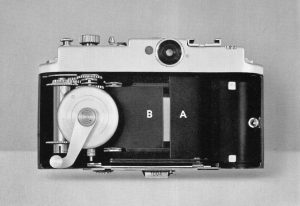
Externally, the Ektra’s shutter appears to be just another cloth focal plane shutter, but upon further inspection, it is a completely unique design that travels in the opposite direction of most other cloth shutters. It also uses a unique method for controlling the fast speeds by pre-setting the gap between the two curtains before releasing the shutter which Kodak said was more accurate.
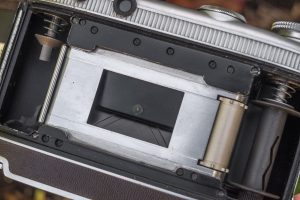
The Foton on the other hand, has a shutter that looks like no other. For starters, it’s a vertically traveling metal blade shutter. Think of it like if a Contax rangefinder shutter and a Copal Square shutter had an offspring, but then it got mutated by Magneto’s mutation machine, and you’re at least in the ballpark. Not only is the Foton’s shutter unique looking, but it also has the capability of shooting continuously at speeds up to 4 exposures per second, a feature that no other camera in the world could do at the time.
From a pure design standpoint, the Foton is the favorite here, but with over half a century of experience to look back upon, the Ektra’s shutter was often criticized for reliability problems and being difficult to repair. It is extremely rare to find a working Ektra these days that has not been previously serviced. The Foton on the other hand, was very reliable, with many still working fine today. This one’s an easy one to decide.
Winner: Foton
Lens Selection
It’s pretty much a given that for a camera to be considered “professional” it must have interchangeable lenses with a variety of focal lengths to choose from. Both the Ektra and Foton have a proprietary lens mount, the Ektra’s being a breech lock screw mount, and the Foton’s a more traditional screw mount with an external bayonet for larger lenses. There are merits for bayonet mounts over screw mounts as they’re usually faster to take on and off and often have an advantage in being more sturdy for larger and heavier telephoto lenses. But lens mount is not where a victor is chosen.
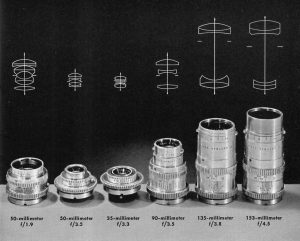
Upon it’s release, the Kodak Ektra had six lenses ranging five different focal lengths from 35mm to 153mm with more planned. Each of these lenses were all extremely well built and were unique in being the first complete lens system designed for any camera where every lens had a color corrected anti reflective coating. There were certainly coated lenses prior to the Ektra, but to have a whole system of coated lenses was unheard of.
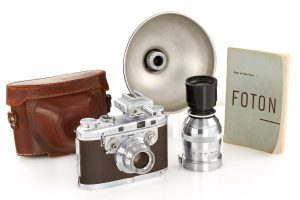
The Foton, although most often equipped with an excellent 2 inch (~50mm) 6-element Cooke Amotal lens, had far fewer options. Upon it’s release in 1948, only two lenses existed, the 2 inch Amotal and a 4 inch telephoto. Eventually, two more telephotos were made, but they were extremely rare and very few were ever sold.
It’s clear that Eastman Kodak invested much more time and energy in a complete lens system than Bell & Howell did, and that likely was a deciding factor for pros willing to plunk down the astronomical asking prices for these cameras.
Winner: Ektra
Accessories
Maybe it’s not fair to have a separate category for accessories when I already declared a winner in a category for accessory lenses, but to the professional who these cameras were marketed at, accessories were a very effective way at getting the most out of their camera system.
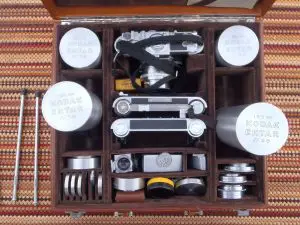
Kodak, being the far more experienced manufacturer of still cameras, had a wide range of accessory top down and right angle viewfinders, close-up rangefinders, and with the removable magazine back, had doors with ground glass focusing screens, an Ektra specific flash gun, and filters galore. Bell & Howell didn’t need a specific flash gun as the camera had a hot shoe on top, but offered far fewer accessories.
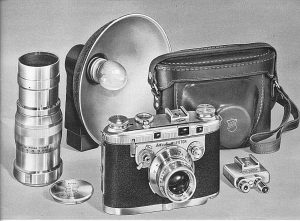
Not being able to remove the back door of the camera meant that things like ground glass focusing screens or bulk film backs (which the Ektra didn’t support either) couldn’t be used.
Looking at the manual and promotional pamphlets for the Foton, the only accessories shown are the flashgun, close focusing rangefinder, and a leather carrying case.
To be fair, a motorized film transport was a common accessory on other pro level cameras of the day which the Foton had built in, so that counts for something, but in terms of actual accessories you could buy, this one’s easy.
Winner: Ektra
Viewfinder and Rangefinder
Considering that both of these cameras are classified as “rangefinder cameras” the rangefinder part of the camera should be a pretty significant part of the camera’s function. Adding to that people like myself who are visually impaired and wear prescription glasses, having a large, bright, and easy to use viewfinder is also a huge benefit that might make me take a lesser camera with a great viewfinder, over a more featured one with a lesser viewfinder.

There are a few similarities between both cameras in that they each have separate viewfinder and rangefinders as it was not typical then for combined coincident image rangefinders to be used. The rangefinders are also both quite small, so people will prescription glasses will likely struggle at times using them.
Where they differ, is the Kodak Ektra’s rangefinder is of the split image type in which two separate images are split by a horizontal line and by changing the focus on the camera, you line up the two images to get accurate focus. This style of rangefinder does not require a beamsplitter and therefore is brighter and easier to use in low light situations. The Ektra also had a clear advantage being designed right before the start of a major war. The Eastman Kodak Company had already been developing cameras for military use like the Kodak 35 and Medalist so they knew how to adapt their military knowledge to civilian cameras. The man primarily responsible for the Ektra was Joseph Mihalyi who had a lot of experience designing military rangefinders and in the Ektra, he created a massive 104mm wide rangefinder for incredible accuracy.
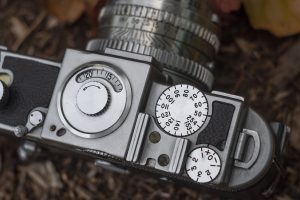
The Ektra’s main viewfinder is about the same physical size as that of the Foton, but it supports variable focal lengths from 50mm to 254mm, meaning that if you wanted to use a telephoto lens, you would turn a knob and the viewfinder image “zooms” to your chosen setting. This is an incredibly useful feature that was found on very few rangefinders over the years. Although the rangefinder doesn’t zoom, it does have it’s own “eye accommodation dial” that works like a diopter for the rangefinder to compensate for people with poor vision.
The Foton’s rangefinder is of the coincident image type in which two images are superimposed on top of each other and you must align the two images to get accurate focus. This would later become the preferred method for rangefinder design, but it has the flaw of being darker and harder to use in low light situations. Neither the Foton’s rangefinder or viewfinder are slouches, as they were up to the task required of them, but they lacked any of the Ektra’s adjustment features and seems rather plain in comparison.
The Ektra is the winner here as not only was it designed to be great initially, the clear prisms of the Ektra’s rangefinder were still bright and easy to use, whereas the beamsplitter in the Foton had fogged and was extremely difficult to use in all but the brightest sunlight.
Winner: Ektra
Ergonomics
Now here’s where things start to get really personal. What is ergonomic to me, might not be ergonomic to someone else. Thousands of different cameras were made throughout the 20th century with thousands of variances in control layouts and such, but what I am looking for here is how logically laid out the controls are. Can the camera be picked up by someone who had never used it before and still be able to use it? Once you do start to learn it, how intuitive are the controls?
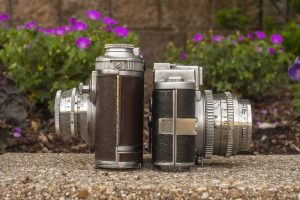
I’ll start off by saying that both the Ektra and Foton have some oddball controls. They are both large and heavy, with the Foton taller (see image to the right) and the Ektra heavier (1048g vs 906g). I would strongly recommend reading the user manual before attempting to load film into either camera as they both require separate steps that aren’t often found on many other cameras. Both cameras also had ground breaking features on them that few, if any cameras prior to them had, so how they worked might not have been quite as logical as say a Nikon SLR from the 1970s.
With that in mind, I’ll start with some highlights. The Ektra is famously a left handed camera with many of it’s key controls on the left side of the camera. The shutter release, shutter speed dial, and film advance are all on the left. According to Kodak, this was done intentionally because it was thought that because more people were right handed, the right hand and arm were stronger and should spend more of it’s time holding and stabilizing the camera, whereas the “weaker” left hand could be left to do the small stuff. I’m not saying I agree with this, but that’s what they apparently thought.
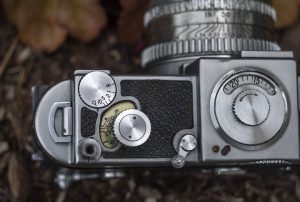
Left handed cameras are not automatically bad, as there were many others like the Ihagee Exakta who were extremely successful, but the position of things like the shutter release and film wind lever are a bit strange on the Ektra.
The Foton on the other hand feels more natural with the shutter release on the front, right side of the camera. It’s location is very natural for your right finger, and is similar to that of a Miranda or early Praktica SLR. Both cameras have a fine focus knob, but where the Ektar’s is a large knob inconveniently in the bottom left front of the camera, the Foton’s is a vertical wheel that is easy to locate with your right index finger, much like that of Contax/Nikon/Kiev rangefinders.
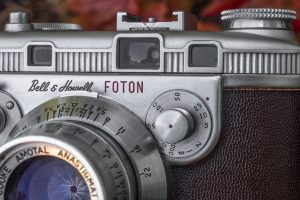
The shutter speed dial on the Foton, although also on the left side is a single rotating knob that allows you to select any of the camera’s speeds with one turn. The Ektra on the other hand uses separate slow and fast dials which aren’t completely obvious the first time you use it and combined with the self timer lever, focal length adjustment wheel, rangefinder eye accommodation wheel, accessory shoe, and large top mounted exposure counter, starts to get cluttered.
The Foton has some curious features, especially around the shutter release area that require a bit of explanation before their function is obvious, but overall, I think the layout of the controls on the Foton is a little cleaner, the shutter release is in a much more natural position, and although the Foton lacks some of the Ektra’s adjustments, this is a case where less is more. The Foton has a cleaner design and feels a bit more natural in use.
Winner: Foton
Looks
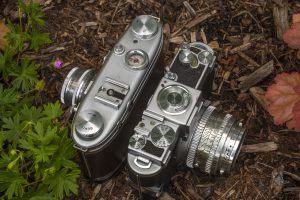
I personally think that both the Foton and Ektra are fine looking and exotic cameras that stand out in a crowd because they don’t look like just another German or Japanese rangefinder.
I can look at each of these cameras sitting on a shelf and admire their beauty all day long, but when it comes down to it, the slightly less cluttered design of the Foton, along with the really attractive ribbed top plate and brown body covering are stand out features that really make people look.
Although I have no scientific evidence of this, I think that if you had both cameras sitting side by side on a table and asked 10 people who knew nothing about cameras to tell you which one is a better looking camera, the Foton would be their favorite, as it is mine.
Winner: Foton
Performance
When it comes down to it, the Ektra and Foton are cameras, and cameras make pictures. The ultimate judgement of a camera is in the pictures it makes and both the Kodak Ektra and Bell & Howell Foton make fantastic photos. Sure, you could nit pick about the flexibility of the system and how each of the merits of each camera would allow for a photographer to capture different types of pictures, but that has more to do with the talent of the photographer and not his equipment.
The gallery below has 2 images each from the Ektra and Foton. Can you even tell a difference?
Neither could I. This one’s a tie.
Winner: Tie
Price
Value is always a deciding factor when comparing two items, whether it’s a car, a stereo, or a camera. Most people’s expectations are tied to what it costs to acquire, and if you pay more for something you should expect to get more, right?

On the surface, this looks like an easy win for the Ektra, as its price upon it’s release (with Ektar 50/1.9) lens was $300, and the Foton’s with the Cooke Amotal T-2.2 lens was $700, but lets take a closer look.
The Ektra made it’s debut in 1941 in the midst of World War II. Most photographers weren’t in the market for expensive professional quality cameras and had less disposable income. Furthermore, the rate of inflation was quite a bit different in the years immediately following the war. Finally, the Foton only had the $700 price for a very short time. Documentation from less than a year after it’s debut show a significantly reduced price of $498 whereas the Ektra seems to have stayed the same price for quite a while longer.
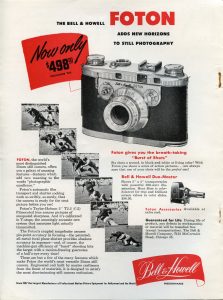
So, lets compare the prices of the Ektra in 1941 with that of the Foton’s original and adjusted prices from 1948 and 1949 respectively:
- Kodak Ektra – $5227.41
- Bell & Howell Foton ($700 MSRP) – $7439.84
- Bell & Howell Foton ($498 MSRP) – $5337.21
Comparing the Foton’s adjusted price to that of the price the Ektra listed for is actually pretty close. Sure, it was originally much higher, but it’s also worth pointing out that back when these cameras were new, no one ever paid retail price for cameras. It was common practice for street prices to be as much as 25% less than manufacturer’s suggested prices.
I’ll still give this one to the Ektra here as for $300, regardless of inflation adjusted or retail street prices, it offered a hell of a bargain. Also, Bell & Howell’s price of $700 for the Foton likely put a lot of people off and probably contributed to it’s failure in the marketplace. With that said, I think it’s a lot closer comparison than the original MSRP prices suggest, however.
Winner: Ektra, but barely
Final Conclusion
In the sections above, the Kodak Ektra has won four categories and the Foton three, plus one tie. Even though this “showdown” is completely un-scientific and made up with my own categories and opinions, I really thought that I would have a strong preference for one over the other. I had pined for an Ektra far longer than the Foton, but ended up shooting the Foton first so perhaps that muddled my opinion.

Looking back at each camera when it was first released. The Ektra was more of a complete system camera, with 6 lenses, a ground glass focusing back, close focusing rangefinder, two other auxiliary finders available, and the full support of Eastman Kodak, a company with decades of experience in still photography, whereas the Foton only had 2 lenses at launch, a single close focusing rangefinder, flash and case available for it.
Although the prices between the two seem a lot different, due to inflation between 1941 and 1948, the adjusted prices someone would have had to pay for each is pretty close to the same.
More Ektras were produced, but they also had the benefit of being made during war time and used by the US Government, and without any clear evidence of how many were actually bought by non-military photographers is anyone’s guess. Far fewer Fotons were made, but that’s not a reliable measurement of it’s success.
In terms of unique features, the Ektra has the adjustable viewfinder and magazine back, but those were things that unless you had a need to shoot telephoto lenses or swap out films mid roll, they weren’t features that everyone needed. The Foton’s clockwork shutter on the other hand was something that everyone could benefit from and was cool as hell.

Both cameras have some strange ergonomics and require a refresher of the manual before using, but the Foton is a bit more natural to use for the first timer as more of it’s controls are in natural positions on the right side of the camera, compared to the mostly left handed controls on the Ektra.
Which one is my favorite? This is a hard one as they’re both fantastic cameras. The Ektra does some things better than the Foton, but they’re in ways that I’m less likely to use. I also know I was incredibly lucky to get my hands on a working Ektra as many of them are inoperable, whereas the Foton has a pretty good reputation for reliability. Bell & Howell created the Foton’s shutter based on their existing knowledge of cinema camera shutters and that clearly helped them build a more reliable shutter, so therefore the Foton is more likely to be usable today.
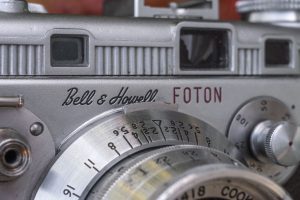
So, with all of that in consideration, better ergonomics, a signature feature that everyone can use, and a shutter that’s more likely to work today, I’m going to have to give it to the Bell & Howell Foton!
Make no mistake though, both cameras are outstanding examples of 35mm rangefinder design, produced by two companies that weren’t expected to make anything to challenge the superiority of the German camera industry. Its refreshing to review a professional camera like these that aren’t copies of previous designs like so many early Japanese and Soviet cameras were.
Both the Ektra and Foton are worthy additions to any collection and in the event you can find one in working condition, they are a lot of fun to use and both capable of outstanding image, which if you think about it, the real winner of this showdown, is you! 🙂
Full Reviews
If you’d like to know more about either of these wonderful cameras, here are links to my reviews of the Ektra and Foton. Both are chock full of historical information, my thoughts on the camera’s usage and many examples of photographs I shot, developed, and scanned for these articles. They likely represent the most complete analyses of either camera anywhere in the world.

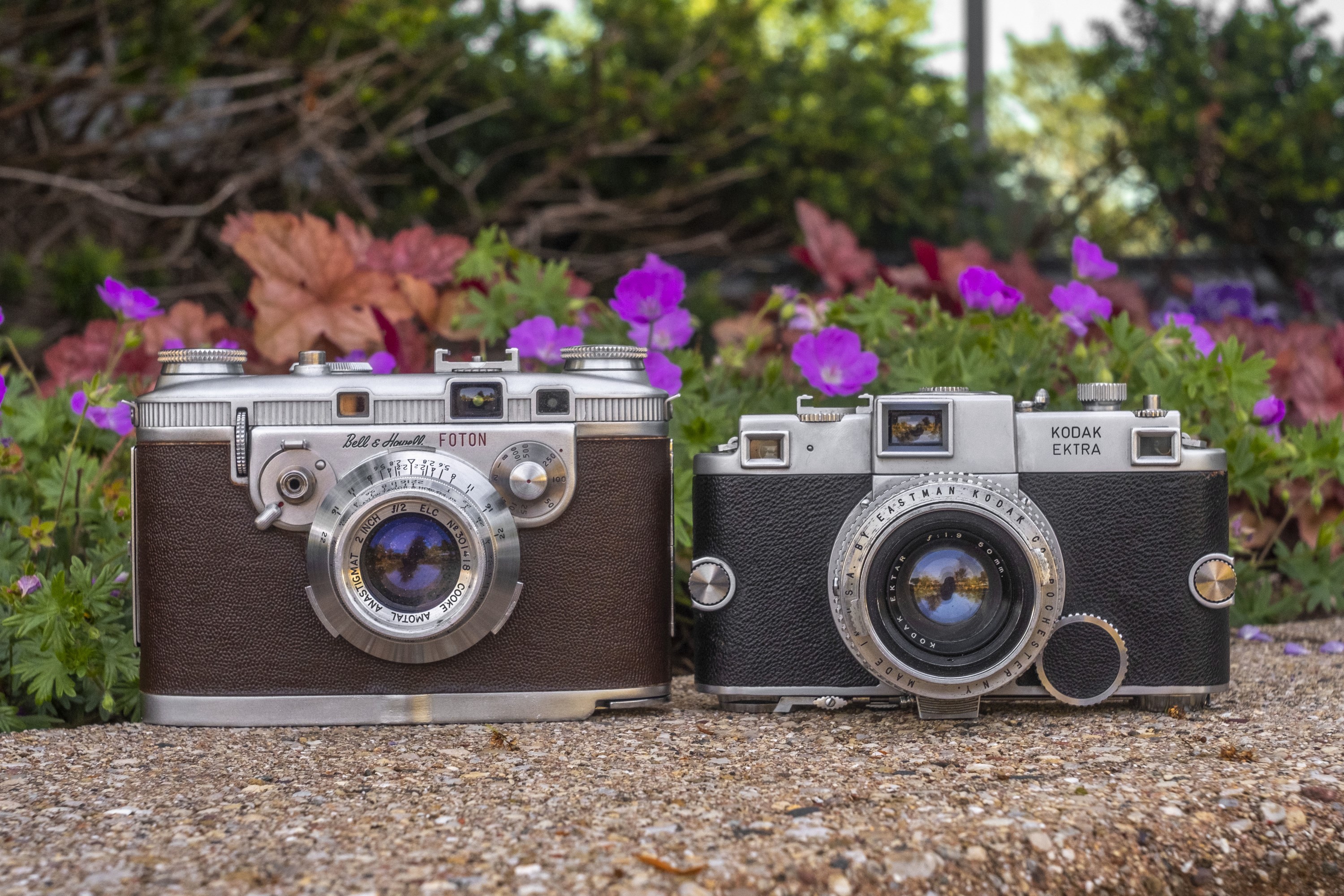
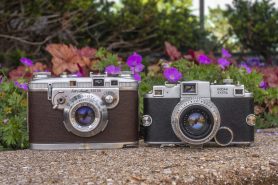





Hello Mike,
Nothing less than-OUTSTANDING REVIEW!
I will be reading and re-reading this one because of the amount of thoroughly researched data and images you shared.
It’s a toss up on the choice- both superb USA made cameras and lenses-I wouldn’t say no to either one.
Thank you for this excellent and very interesting review!
Best,
Wayne S.
Thanks Wayne for the kind words! These two cameras were certainly fun to shoot and even more fun to put head to head!
Hey Mike, What is the price comparison for buying these today on the used market? Does that even up the scores any?
A Foton just sold on eBay a couple of weeks ago for $810 and Ive seen Ektras go for around the same price. Of course, these are anomalies. These cameras are both very rare, and their condition and included accessories can wildly affect the price. Some Ektras sell in complete kits for $2000. Also, not many show up for sale, so when they do, sometimes no one notices them, or perhaps a dozen people get into a bidding war.
So its really hard to say how they compare. Considering the Foton is rare, but also more likely to work, it’s probably the better buy, but if I ever saw a nice Ektra for under $1000, I would be hard pressed not to consider it.
Thanks, Mike, for reviewing two “American Dream” cameras side-by-side. Unless my wife agrees to a second mortgage (ha ha) I doubt I’ll ever see an Ektra and a Foton sharing our kitchen table.
I am not kidding when I say I had been after an Ektra for years. I had been bugging a few collectors to loan me one, and they always said no. I never even bothered to try and get a Foton as I thought they were too rare. Then one day, I got an email from a reader of this site offering to loan a Foton to me. I couldn’t believe my luck, but then within weeks, another collector agreed to loan me his Ektra.
If you would have told me at the beginning of 2019 that Id get to review either of these cameras, I wouldn’t have believed it, but to have both of them at the same time….amazing!
Complements to you for your well researched work, it is most informative and very well done. Incidentally, I am a fan of a far more available and simple camera. The Kodak Retinette with its three lens Reomar glass was my first camera in 1961. Perhaps one day you may give your opinion on one. Sometimes less glass has its advantages, the Retinette results are difficult for me to distinguish from the upmarket Retinas, and they cost less. I must have a dozen versions of it.
Anyway I loved your review of cameras most are never likely to encounter.
Regards,
Arnold
Thanks for the kind words, Arnold. Amazingly, I have never come across any Retinettes in my collecting. I usually buy cameras in lots and get a bunch of stuff I never would have bought on it’s own, but somehow none have ever crossed my path. I am not surprised though, that you’ve gotten great results. Many 3-element lenses like the Reomar are quite capable. Schneider Radionar and Xenars are really great lenses too!
MIke, thank you for this, another fun showdown would be the Foton v Robot Royal, Does any body know who might be able to service a B&H Foton, I have one , it needs some attention. Thanks Adam
Adam, I will check with the owner of the Foton I borrowed and see if he knows of anyone who could service them. They’re pretty rare cameras that were likely difficult to repair when they were new, so finding someone today might be hard.
Thank you for this very interesting review of two wonderful cameras. Your photos look excellent, by the way. I really like both of these cameras, and find it exciting that the US produced two such excellent cameras in the ’40’s. I personally find the Ektra a more exciting camera — the extraordinary effective base length of the Ektra’s rangefinder, the interchangeable magazines, the lens selection and the industrial design. (I actually see quite a bit of foreshadowing of the M3 in the Ektra’s design.) I also find it exciting how Kodak produced several fantastic camera’s in the mid-20th century, such as the Medalist and at least nominally the Retina cameras, but feel like the Ektra was unrivaled at the time. As for wind up drive cameras, I personally prefer the Robot cameras particularly the later Robot Royal 36 to the Foton. Still though, I think the Foton is a fantastic camera, and so ultimately as a friend of mine’s daughter said when asked whether she preferred Big Bird or Barney, responded “I like them both.”